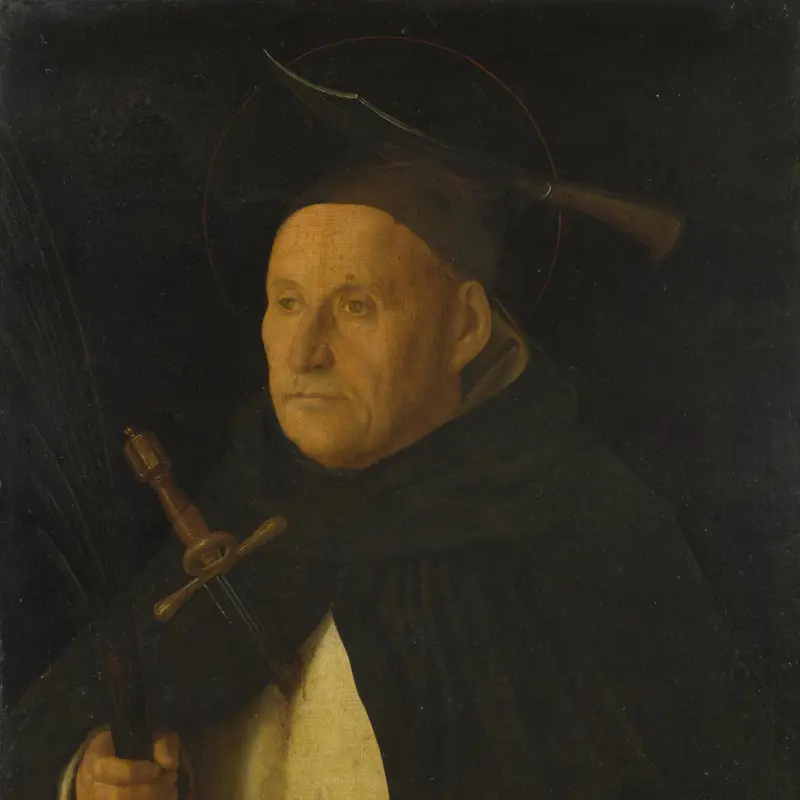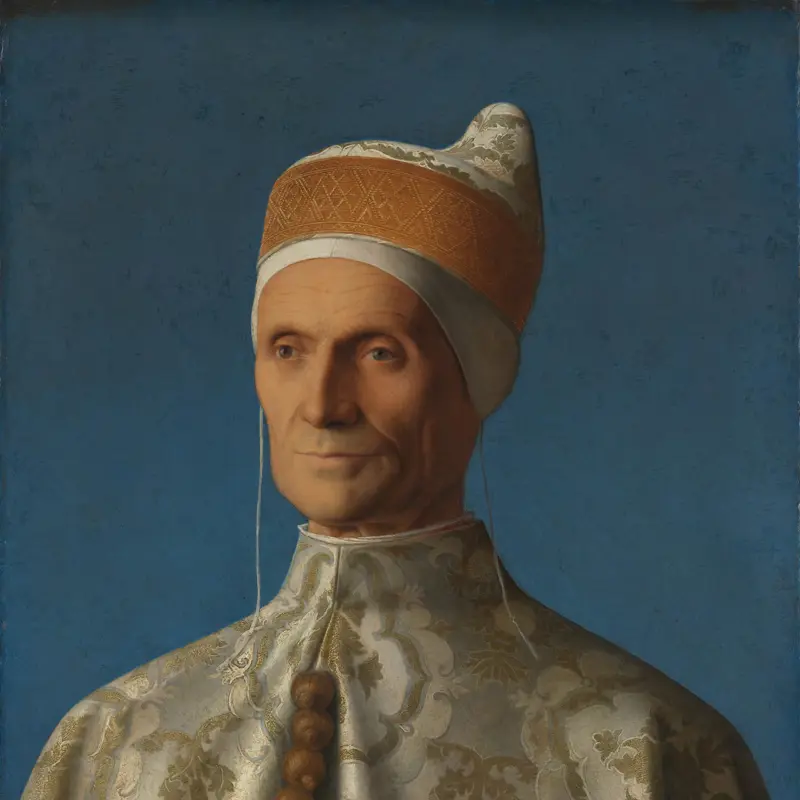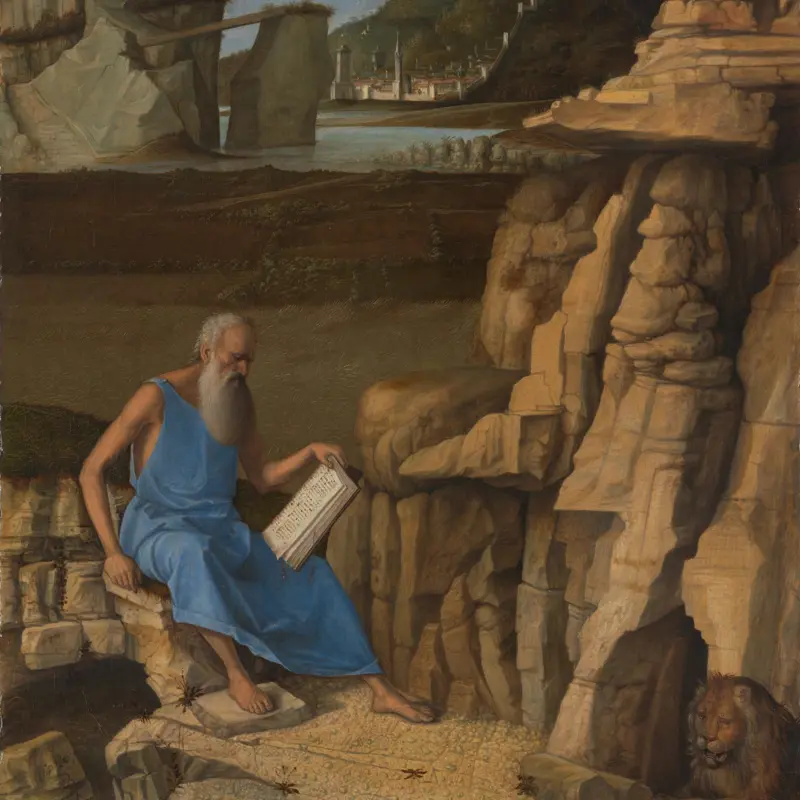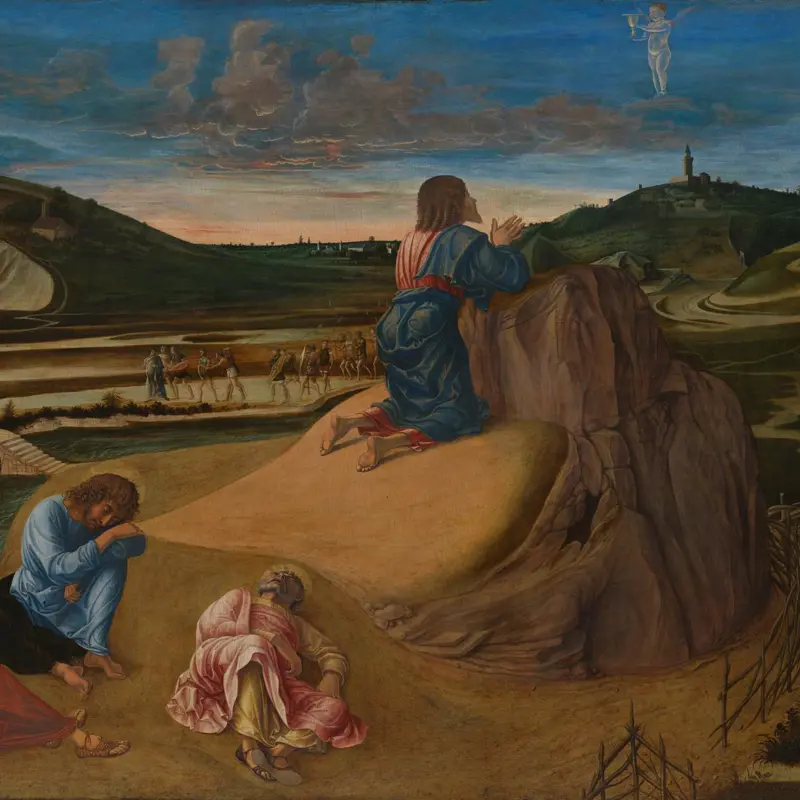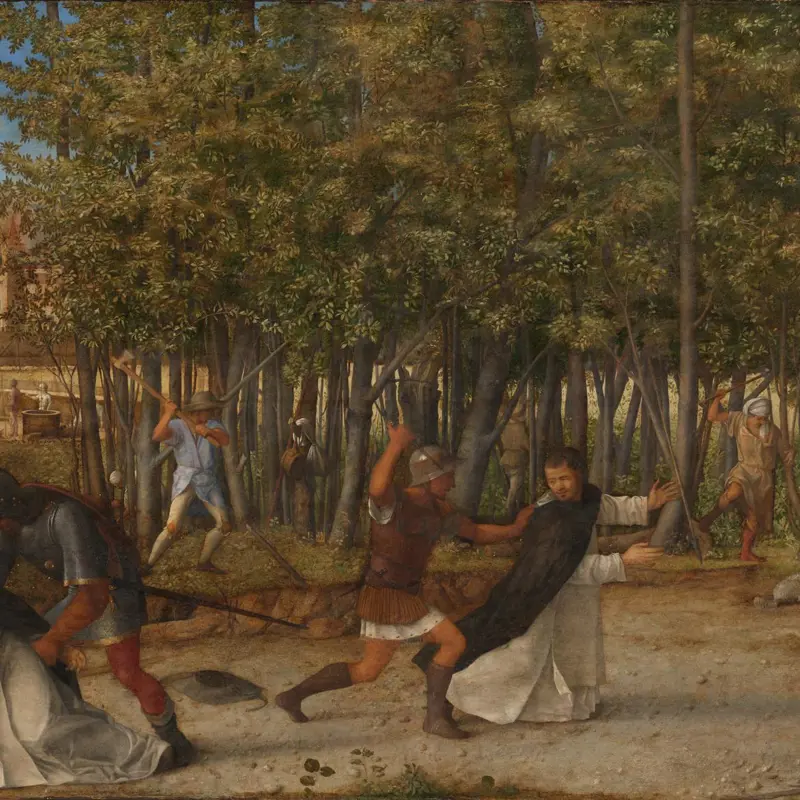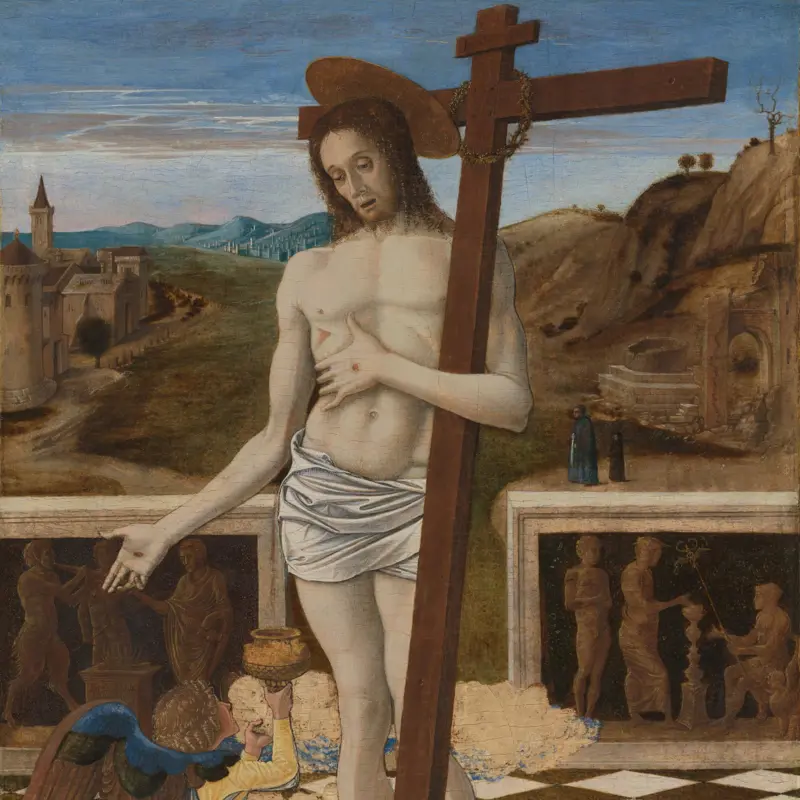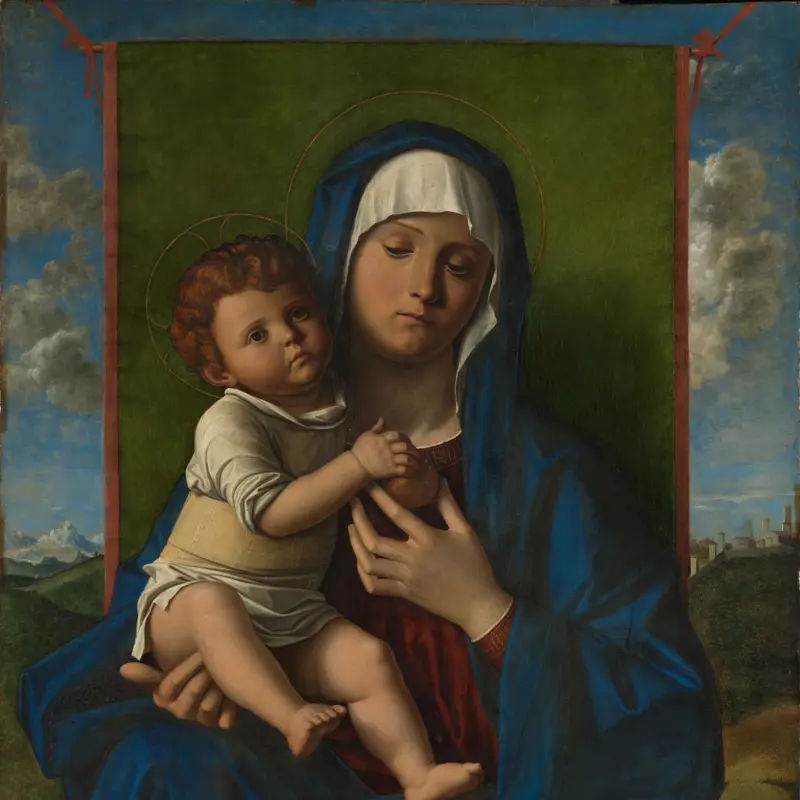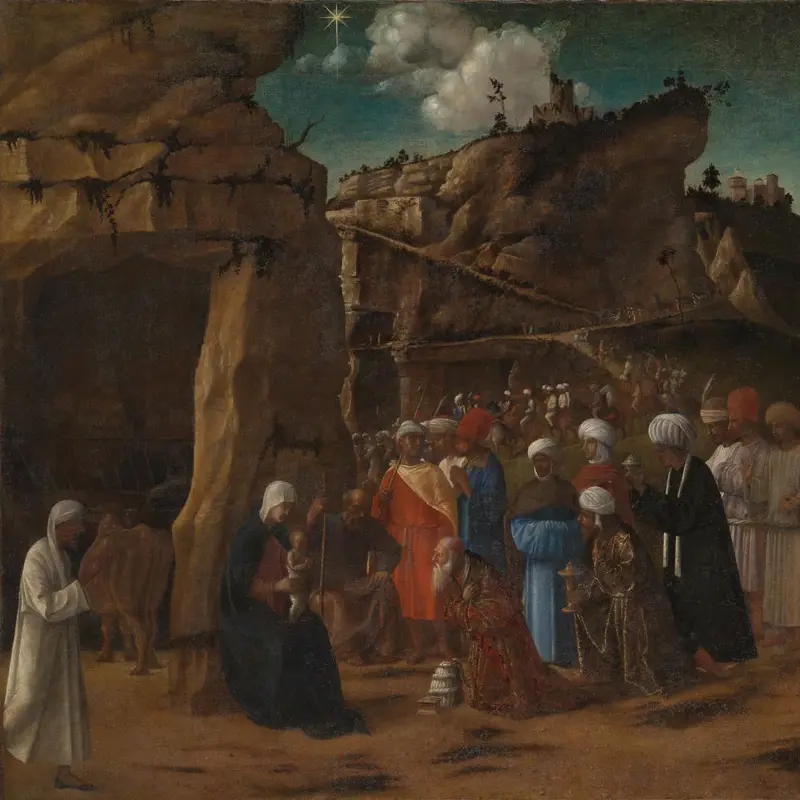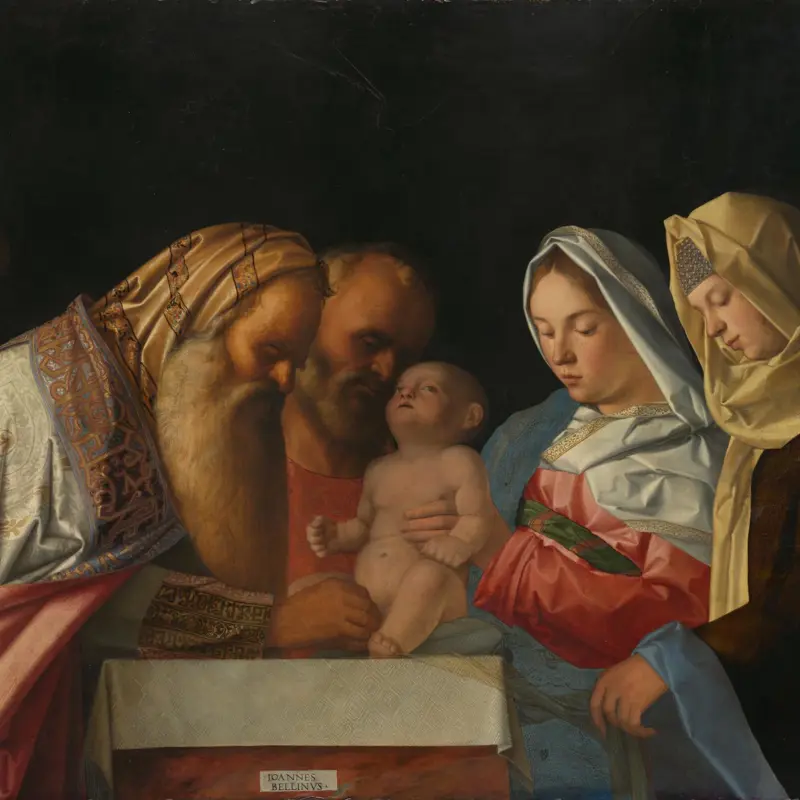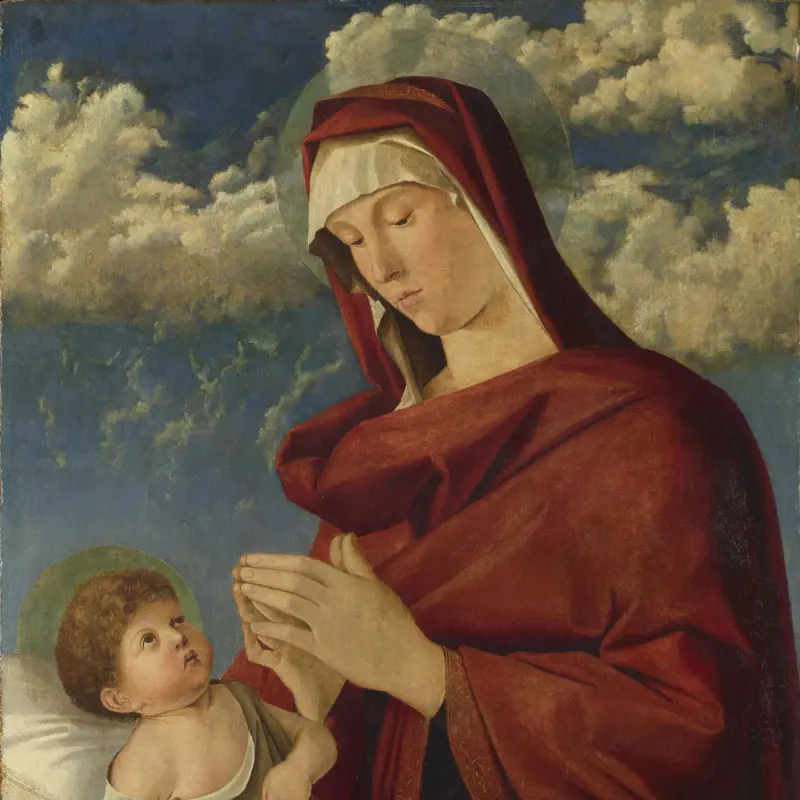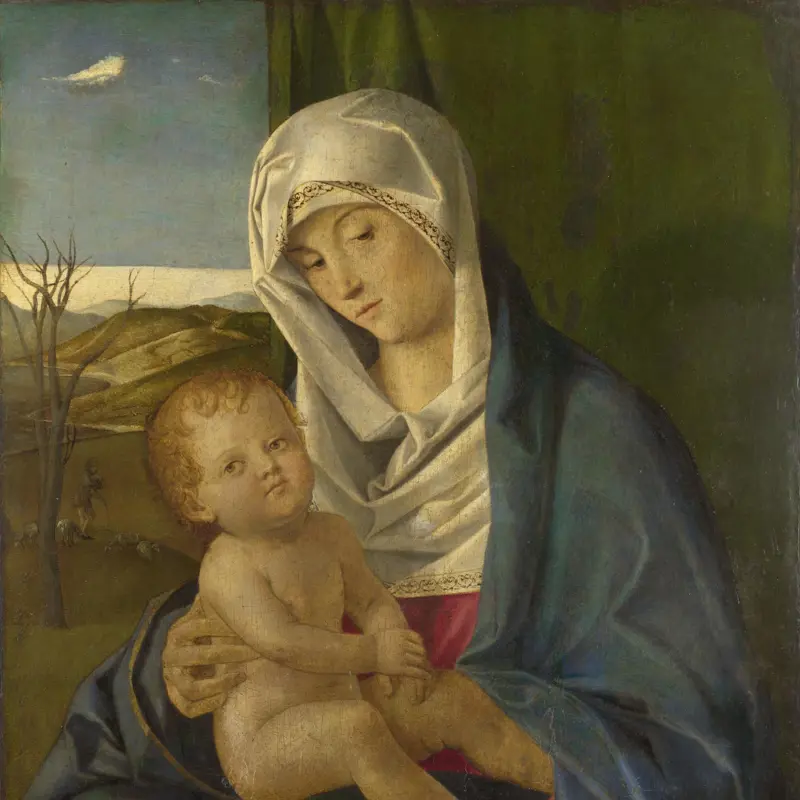Giovanni Bellini, 'Portrait of Fra Teodoro of Urbino as Saint Dominic', about 1515
About the work
Overview
This painting dates from the end of the artist's life. It may have been intended as a portrait of Fra Teodoro who, as a Dominican, would have identified himself with the founder of his religious Order. Alternatively, Fra Teodoro may have served as the model for the painter.
The date and the inscription are probably original.
Key facts
Details
- Full title
- Portrait of Fra Teodoro of Urbino as Saint Dominic
- Artist
- Giovanni Bellini
- Artist dates
- About 1435 - 1516
- Date made
- About 1515
- Medium and support
- Oil on canvas
- Dimensions
- 62.9 × 50.8 cm
- Inscription summary
- Signed; Dated and inscribed
- Acquisition credit
- On loan from the Victoria and Albert Museum
- Inventory number
- L1115
- Location
- Room 63
- Image copyright
- On loan from the Victoria and Albert Museum
- Collection
- Main Collection
About this record
If you know more about this work or have spotted an error, please contact us. Please note that exhibition histories are listed from 2009 onwards. Bibliographies may not be complete; more comprehensive information is available in the National Gallery Library.

